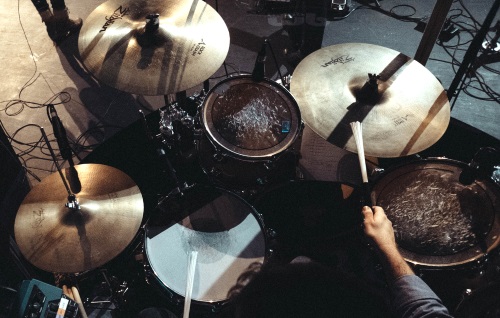We’ve all been there. You’re either on stage or in the studio with a drummer that has no idea that his or her cymbals are way louder than the rest of the kit. Everything’s fine until you come to a tom fill or chorus when either the crash (the usual culprit) or the ride cymbal suddenly wants to drown everything out in the room. Here are four ways to attempt to get those cymbals under control…

1: Change The Cymbals
Let’s start at the source, which is the cymbals themselves. Many drummers choose cymbals for the wrong reason and don’t try to match them to the situation.
Heavy cymbals, for instance, will cut through a loud band on stage and are hard to break, but put them in the studio and they’ll wash out a drum kit in no time. Generally speaking, lighter cymbals sound better in the studio and are a closer match to the volume level of the drums.
2: Ask The Drummer To Hit Less Aggressively
A great drummer has a feel for how aggressive to be with cymbal hits so the volume level is appropriate for the section of the song. In that case, if the level is too loud you can easily say, “Can you back off on the cymbals a little?” and know that you’ve accomplished the level change without have to do much else.
Some drummers just can’t do this however, either because they’re not capable of that kind of internal command or feel that it somehow decreases the passion in their playing.
3: Mute The Cymbals
There are a lot of ways to control the level of cymbals themselves, ranging from old-fashioned gaffers tape to products like Drumtacs, but level control usually comes at a cost of tone. It’s a cheap and fast way to accomplish the task, but more appropriately weighted cymbals are the better choice.
4: Lower The Gain On The Cymbal Or Overhead Mics
This is a last resort since it really won’t work all that well. The problem with cymbals that are too loud is that they’ll bleed into the other drum mics (especially the toms) so you’re still left with the same problem, only it might sound even worse.
Best case scenario is that you have a drummer that is in tune with his cymbals and aware that their volume level is important to the overall sound of the band. Otherwise, the other fixes are just band aids that probably won’t give you the results that you’re looking for.
You can read more from The Recording Engineer’s Handbook and my other books on the excerpt section of bobbyowsinski.com.




















